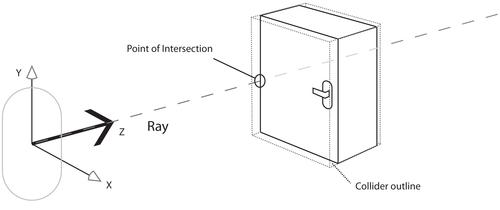Whilst we can detect collisions between the player character's collider and a collider that fits the door object, or a trigger collider near to the door—we can also check whether the player is about to intersect a collider by casting a ray forward from where the player is facing. This means that when approaching the door, the player need not walk right up to it—or walk into an extended trigger collider—in order for it to be detected.

However, the drawback of this approach is that it means the player must be facing the door's collider in order for the ray to intersect it (given that the ray is cast in the forward direction of the player), which as you'll likely know is not how an automatic door works—it simply detects motion near to it.
Despite the drawbacks of this and the collision detection approach, as you will discover in your time learning game development in Unity, it is often good to try a number of approaches to a problem in order to decide which is the most efficient...



